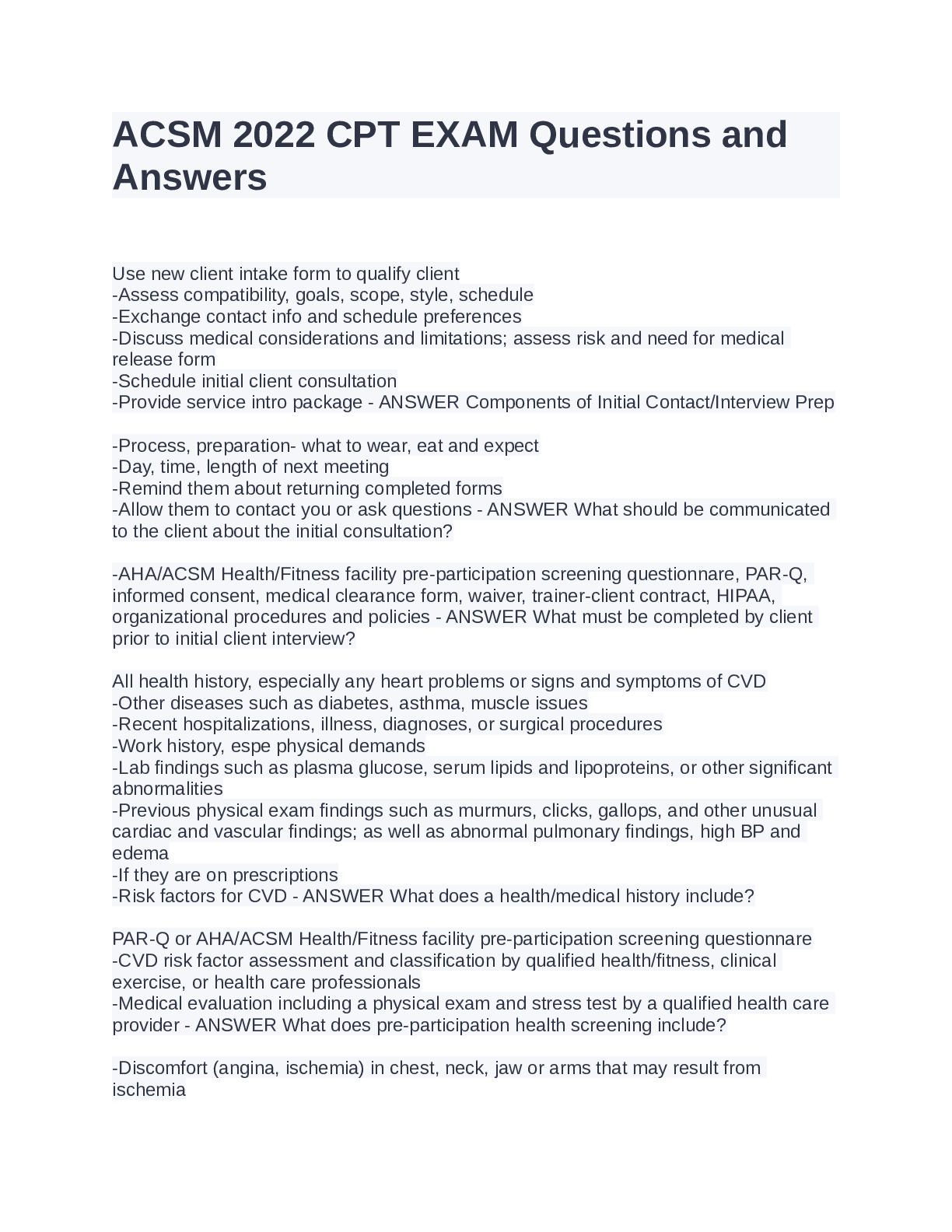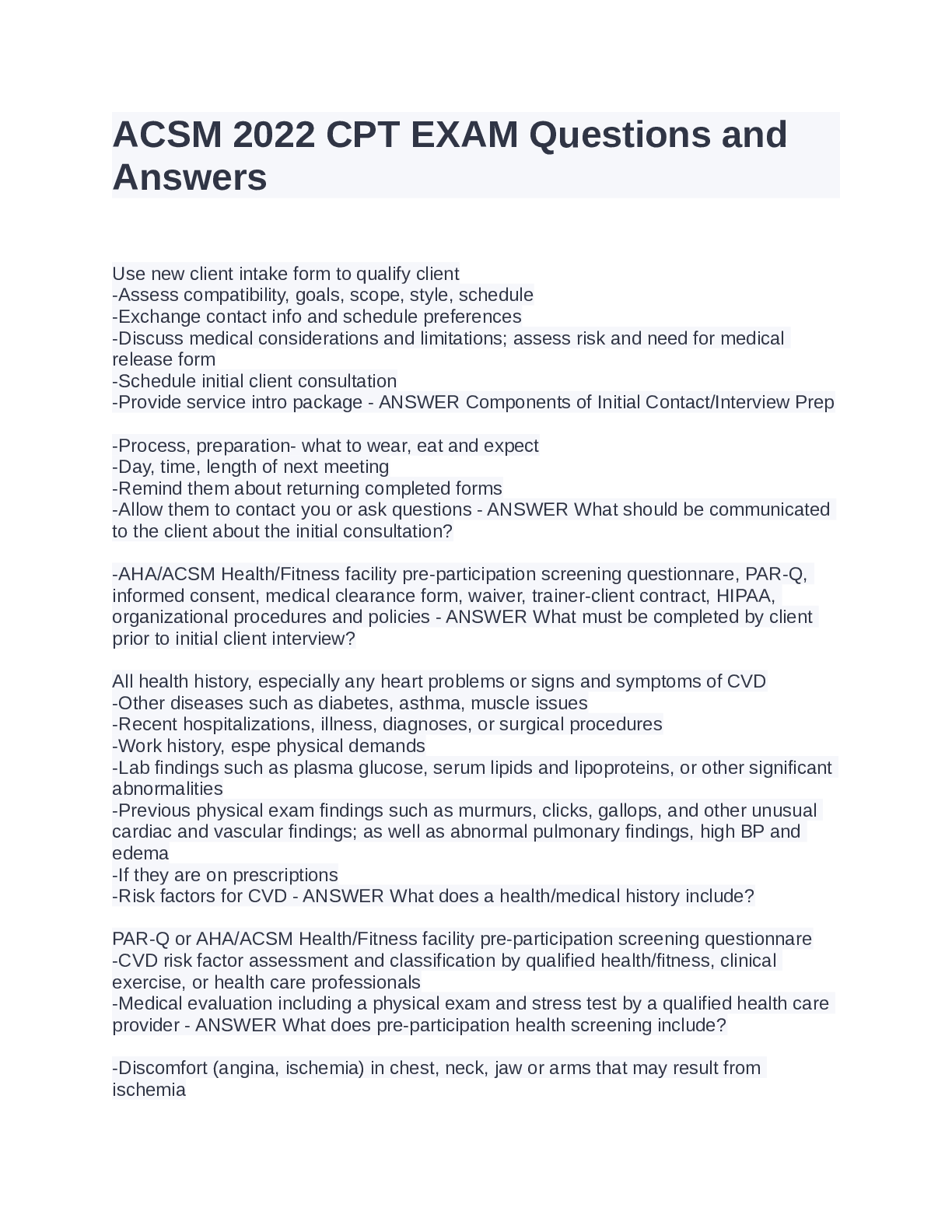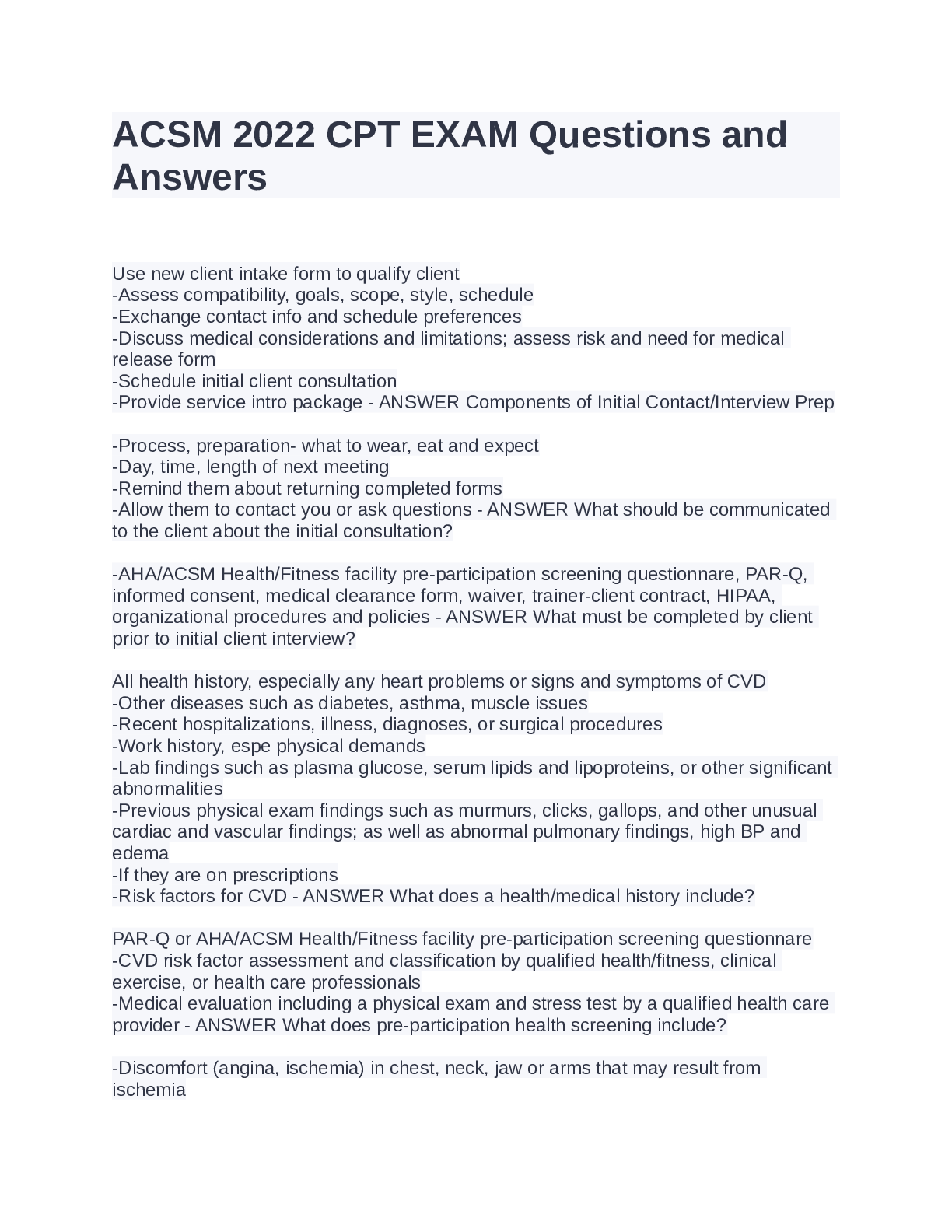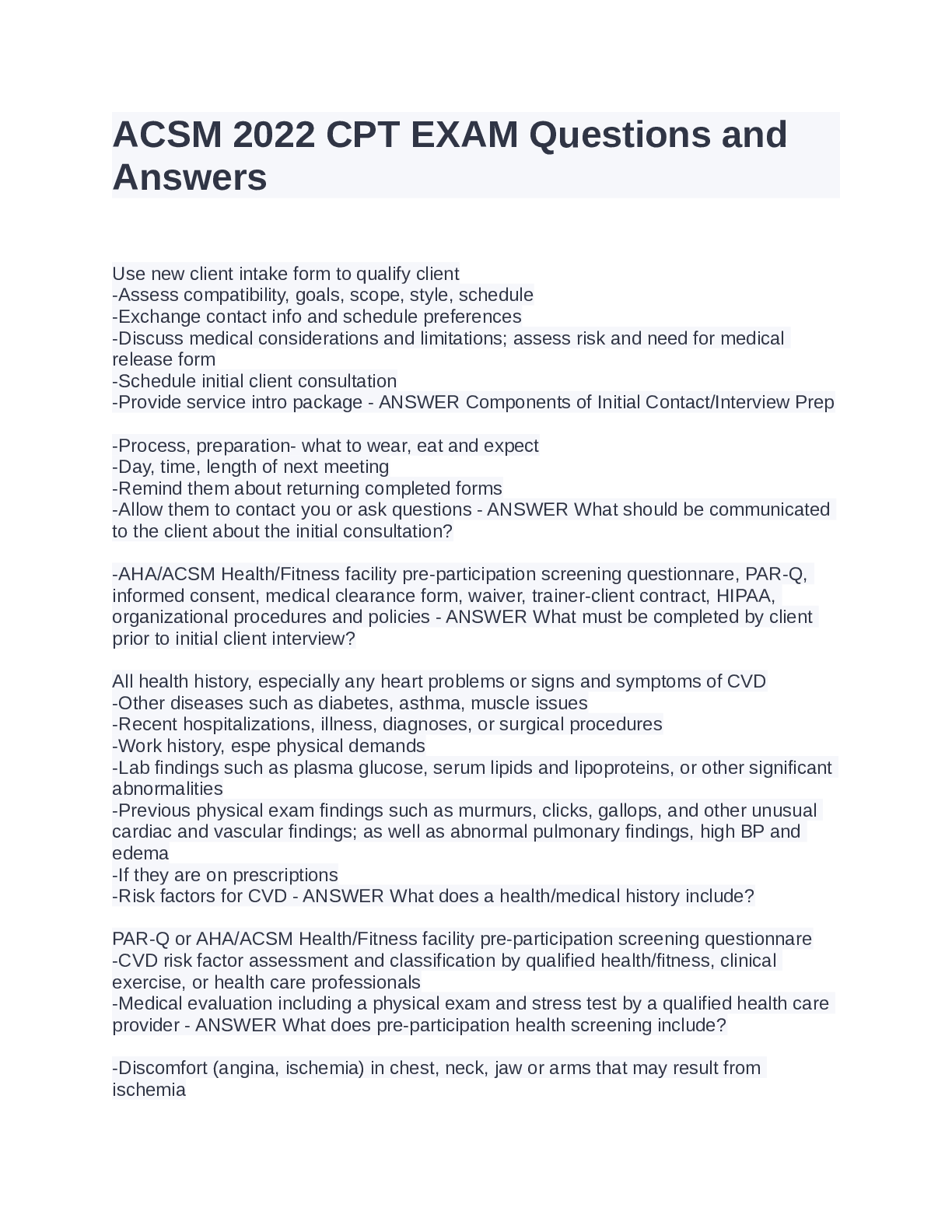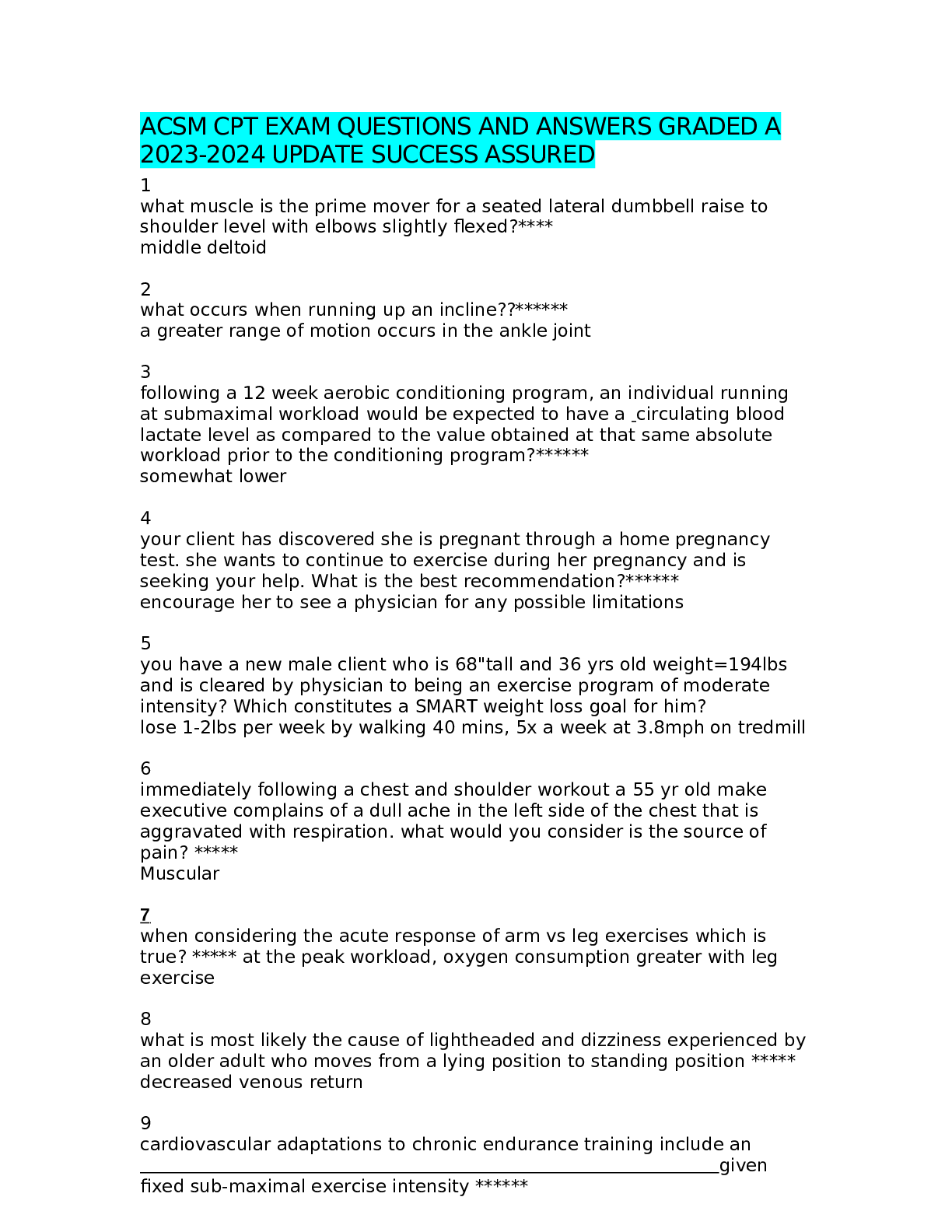ACSM 2022 CPT EXAM Questions and Answers
Document Content and Description Below
Use new client intake form to qualify client -Assess compatibility, goals, scope, style, schedule -Exchange contact info and schedule preferences -Discuss medical considerations and limitations; as... sess risk and need for medical release form -Schedule initial client consultation -Provide service intro package - ANSWER Components of Initial Contact/Interview Prep -Process, preparation- what to wear, eat and expect -Day, time, length of next meeting -Remind them about returning completed forms -Allow them to contact you or ask questions - ANSWER What should be communicated to the client about the initial consultation? -AHA/ACSM Health/Fitness facility pre-participation screening questionnare, PAR-Q, informed consent, medical clearance form, waiver, trainer-client contract, HIPAA, organizational procedures and policies - ANSWER What must be completed by client prior to initial client interview? All health history, especially any heart problems or signs and symptoms of CVD -Other diseases such as diabetes, asthma, muscle issues -Recent hospitalizations, illness, diagnoses, or surgical procedures -Work history, espe physical demands -Lab findings such as plasma glucose, serum lipids and lipoproteins, or other significant abnormalities -Previous physical exam findings such as murmurs, clicks, gallops, and other unusual cardiac and vascular findings; as well as abnormal pulmonary findings, high BP and edema -If they are on prescriptions -Risk factors for CVD - ANSWER What does a health/medical history include? PAR-Q or AHA/ACSM Health/Fitness facility pre-participation screening questionnare -CVD risk factor assessment and classification by qualified health/fitness, clinical exercise, or health care professionals -Medical evaluation including a physical exam and stress test by a qualified health care provider - ANSWER What does pre-participation health screening include? -Discomfort (angina, ischemia) in chest, neck, jaw or arms that may result from ischemia -Shortness of breath and rest or with mild exertion -Dizziness or loss of consciousness (syncope) -Bilateral ankle edema -Palpitations or tachycardia -Intermittent claudication (pain in a muscle with inadequate blood supply, usually a result of atherosclerosis)-stressed by exercise -Known heart murmer -Unusual fatigue or shortness of breath with usual activities - ANSWER Signs and symptoms of cardiovascular, metabolic or pulmonary disease -Recent change in ECG suggesting significant ischemia, recent myocardial infarction within two days, or other acute cardiac event -Unstable angina -Uncontrolled cardiac dysrhythmias -Symptomatic, severe aortic stenosis -Uncontrolled, symptomatic heart failure -Acute pulmonary embolos or pulmonary infarction - ANSWER Absolute contraindications to exercise testing -Acute myocarditis or pericarditis -Suspected or known dissecting aneurysm -Acute systemic infection, accompanied by fever, body aches or swollen lymph glands - ANSWER More absolute contraindications to exercise testing -Left main coronary stenosis -Moderate stenotic valvular heart disease -Electrolyte abnormalities -Severe arterial hypotension with SBP> 200, DBP>110 at rest -Tachy/bradydysrhythmias -Hypertrophic cardiomyopthy, or other forms of outflow track obstruction - ANSWER Relative contraindications to exercise testing -Neuromotor, musculoskeletal or rheumatoid disorders that are exascerbated by exercise -High degree AV block -Ventricular aneurysm -Uncontrolled metabolic disease such as diabetes, thyrotoxicosis -Chronic infectious disease such as HIV -Mental or physical impairment leading to inability to exercise adequately - ANSWER Relative contraindications to exercise testing, continued Increase in muscle size from remodeling of proteins- increase of muscle cell size - ANSWER Hypertrophy Muscle wasting. Can occur after prolonged immobility or can be from a disease - ANSWER Atrophy Increase in number of muscle cells or fibers - ANSWER Hyperplasia Medical clearance is recommended when: -An individual has known CV, metabolic or renal disease and is asymptomatic OR -An individual has any signs or symptoms of CV, metabolic or renal disease, regardless of disease status - ANSWER For an inactive person who does not participate in regular exercise, when is medical clearance recommended? Following medical clearance, light to moderate intensity exercise is recommended. May gradually progress as tolerated following ACSM guidelines. - ANSWER After a medical clearance for an inactive person who either has known CV/metabolic/renal disease and is asymptomatic, or an individual who has any signs or symptoms of CV/metabolic/renal disease, regardless of disease status, how should that individual be progressed in an exercise program? NO - ANSWER Does an individual need medical clearance who is not diagnosed with CV, metabolic or renal disease, and shows no symptoms of the above? No medical clearance is needed before beginning an exercise program. It is recommended to start with light to moderate exercise and gradually progress to vigorous intensity exercise, following ACSM guidelines. - ANSWER How would a trainer progress an individual with no diagnosis or signs or symptoms of CV, metabolic or renal disease? The client should discontinue exercise immediately and obtain medical clearance before continuing exercise at any intensity - ANSWER If a patient is already exercising regularly, but has signs or symptoms of CV, metabolic or renal disease, regardless of diagnosis or not, should the client continue exercising? They may continue moderate intensity exercise without medical clearance, but if they want to progress to vigorous intensity exercise it is recommended to get medical clearance first. - ANSWER If a patient has a known history of CV, metabolic or renal disease, but no current signs or symptoms (ie they are stable), should this patient continue exercising? True - ANSWER T/F a client would be classified as low risk who has absence of ventricular dysrhymias during exercise testing and recovery, absence of angina or other significant symptoms such as shortness of breath, light-headedness, or dizziness during exercise testing and recovery, and has presence of normal hemodynamics such as appropriate increases and decreases in HR and SBP during exercise testing and recovery -Absence of: complicated ventricular dysrhythmias or revascularization procedures, absence of congestive heart failure, absence of signs or symptoms of post event or post procedure myocardial ischemia, absence of clinical depression -Resting ejection fraction is less than or equal to 50% -Uncomplicated myocardial infarction or revascularization procedure - ANSWER Non-exercise Testing Findings for Low Risk Clients -Presence of angina or other significant symptoms such as shortness of breath, light headedness or dizziness, but only at high levels of exertion , 7 or more METs - Mild to moderate level of silent ischemia during exercise testing or recovery -Functional capacity less than 5 METs -Resting ejection fraction 40-49% - ANSWER What would classify a client as moderate risk for cardiovascular and pulmonary rehabilitation risk stratification? High risk for exercise participation - ANSWER Presence of complex ventricular dysrhythmias during exercise testing or recovery HIGH RISK - ANSWER Presence of angina or other significant symptoms such as shortness of breath, light headnesses or dizziness at low levels of exertion (less than 5 METs or during recovery) HIGH RISK - ANSWER High level of silent ischemia during exercise testing or recovery HIGH RISk - ANSWER Abnormal hemodynmaics with exercise testing (flat or decreasing SBP with increasing workloads, chronotropic incompetence, or severe post exercise hypotension - Resting ejection fractin is less than 40% -History of cardiac arrest or sudden death -Complex dysrhymtias at rest -Complicated myocardial infarction or revascularization procedure -Congestive heart failiure -Signs or symptoms of post event or post procedure myocardial ischemia -Clinical depression - ANSWER Non exercise testing findings for High Risk stratification -Explains purpose of the test and the test itself -Risks and discomforts ass. with the thest - Responsibilities of the participant -Benefits to be expected -Inquiries (they can ask whatever) -Use of medical records -Freedom of consent (giving their consent) - ANSWER Informed consent form Men 45 or older, women 55 or older - ANSWER CVD Risk factors: Age Myocardial infarction, coronary revascularization, or sudden death before age 55 in father or first degree male relative and age 65 in mother or first degree female relative - ANSWER CVD risk factors:family history Current smoker or those who quit within the past 6 months or have exposure to environmental tobacco smoke - ANSWER CVD risk factors: smoking Not participating in at least 30 minutes of moderate intensity activity on at least 3d/wk for at least 3 months - ANSWER CVD risk factors: Physical inactivity Body mass index 30 or more or waist girth greater than 102 cm or 40 in for men and 88 cm or 35 inches for women - ANSWER CVD risk factors: Obesity SYS BP 140 or more, DBP 90 or more on at least two separate occasions, or on anti-hypertensive medication - ANSWER CVD Risk factors: hypertension Low density lipoprotein cholesterol 130 mg/dl or more. HDL less than 40 mg/dl or on lipid lowering meds. If total serum cholesterol is all that is available, needs to be 200 mg/dl or more is a risk factor - ANSWER CVD risk factors: dyslipidemia Fasting plasma glucose 126 mg/dl or more or 2 h plasma glucose values in oral glucose tolerance test - ANSWER CVD risk factors: diabetes HDL 60 mg/dl or more - ANSWER CVD risk factor: negative risk factor 10-15% - ANSWER What percent of the time should a personal trainer be speaking during an initial consultation? True, if the results are available immediately. Clients like to known how they did. - ANSWER T/F Assessment results can be a part of the initial client consultation Pre-contemplatoin, contemplation, preparation, action, maintenance - ANSWER What are the stages of the Trans-Theoretical Behavioral Model? -Individual is unaware of need to change -Resistant to change -Raising awareness and education - ANSWER What is the pre-contemplation stage of the Trans-Theoretical Behavioral Model? -Awareness of need to change -Open to discussion about change -Still undecided -Motivation and encouragement may be needed - ANSWER What is the contemplation stage of the TTBM? Preparation stage of TTBM - ANSWER -Decided that it is worth making the change -Preparing to make changes -May need help planning Action stage of TTBM - ANSWER -Actively creating changes -May need assistance problem-solving -Reinforce positive behaviors -Continue behaviors -Create plans to avoid relapse -Continue to help reinforce and problem solve - ANSWER Maintenance stage of TTBM A client's belief in his or her ability to succeed - ANSWER Self-efficacy FALSE - ANSWER T/F clients with low self efficacy have a greater level of confidence and belief in change and are more likely to engage in successful behaviors Suggests that the main predictors of behavior change are the perceived seriousness of a potential health problem related to the behavior (ex inactivity), one's susceptibility to potential health consequences, and the belief that making the suggested behavior changes will result in decreased risk of consequences - ANSWER Health Belief Model True - ANSWER T/F According to the Health Belief Model, the client must believe any perceived barriers are outweighed by benefits True - ANSWER According to the Health belief model, the cost of changing the behavior must be relevant for the client and worth the risk reduction it offers Health Belief Model - ANSWER Which theory of behavior change asserts that a theoretical client, Joan, will be more likely to engage in long-term physical activity if she recognies and understands her risk of illness associated with a sedentary lifestyle, accepts that this risk is serious, and believes that engaging in physical activity and nutrition intervention will reduce this risk Suggests that intention to engage in a behavior will ultimately result in that behavior, and that a client's level of intent is shaped by his or her attitudes ( how helpful and enjoyable the behavior is perceived to be), subjective norms (social pressure), and perceived control (self-efficacy and controllability). - ANSWER Theory of Planned Behavior Theory of Planned Behavior - ANSWER Which theory of behavior change states that a [Show More]
Last updated: 2 years ago
Preview 1 out of 16 pages

Buy this document to get the full access instantly
Instant Download Access after purchase
Buy NowInstant download
We Accept:

Reviews( 0 )
$6.00
Can't find what you want? Try our AI powered Search
Document information
Connected school, study & course
About the document
Uploaded On
Sep 30, 2022
Number of pages
16
Written in
Additional information
This document has been written for:
Uploaded
Sep 30, 2022
Downloads
0
Views
49


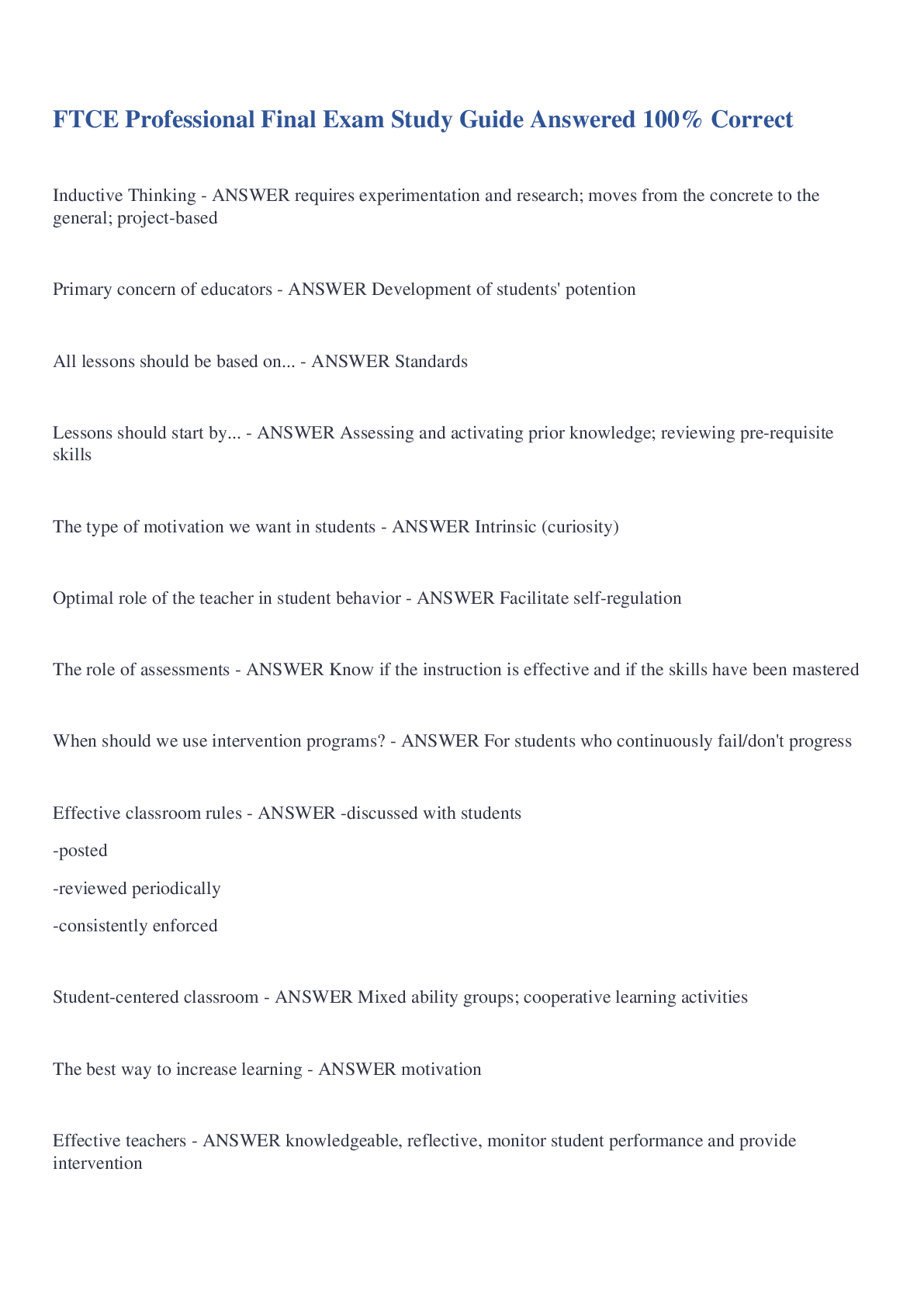
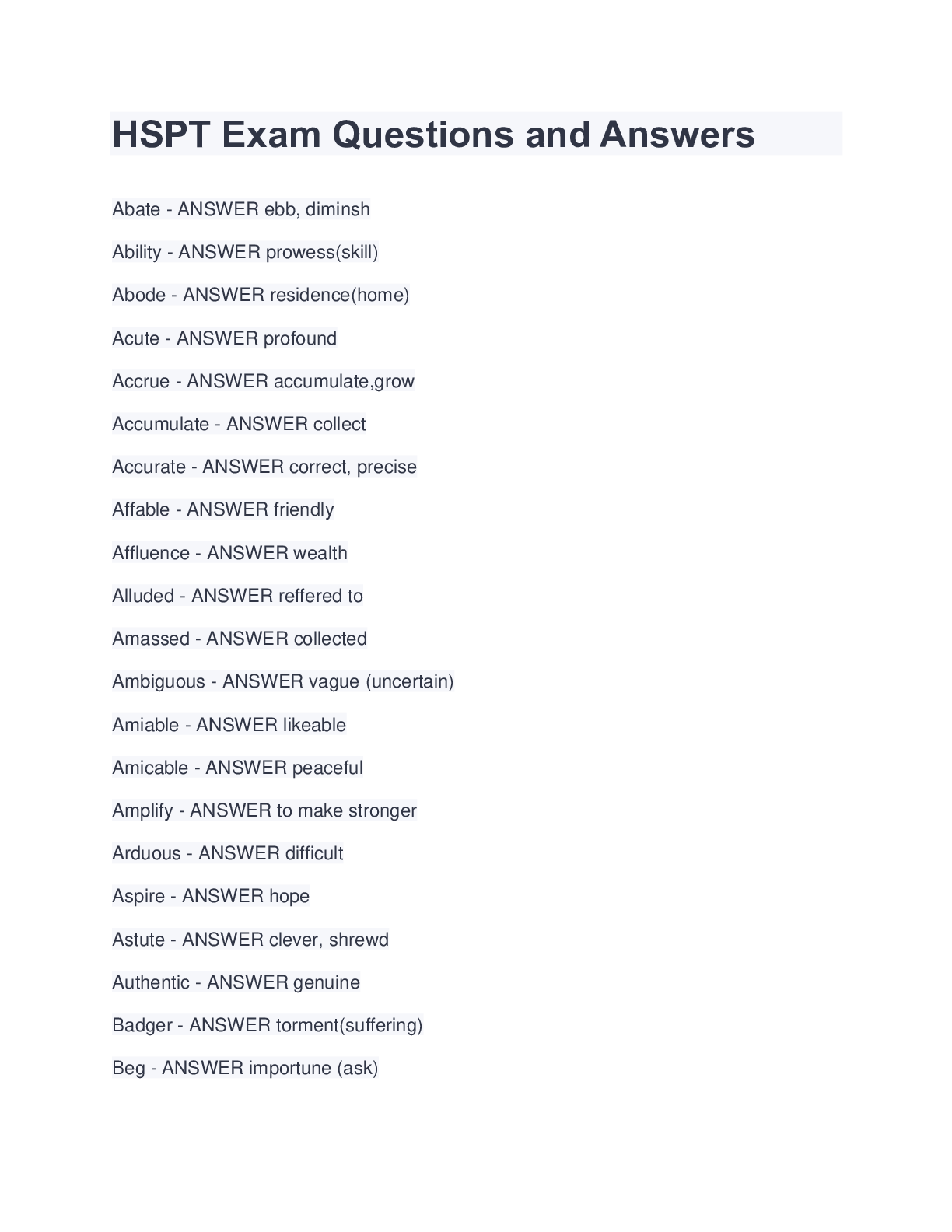
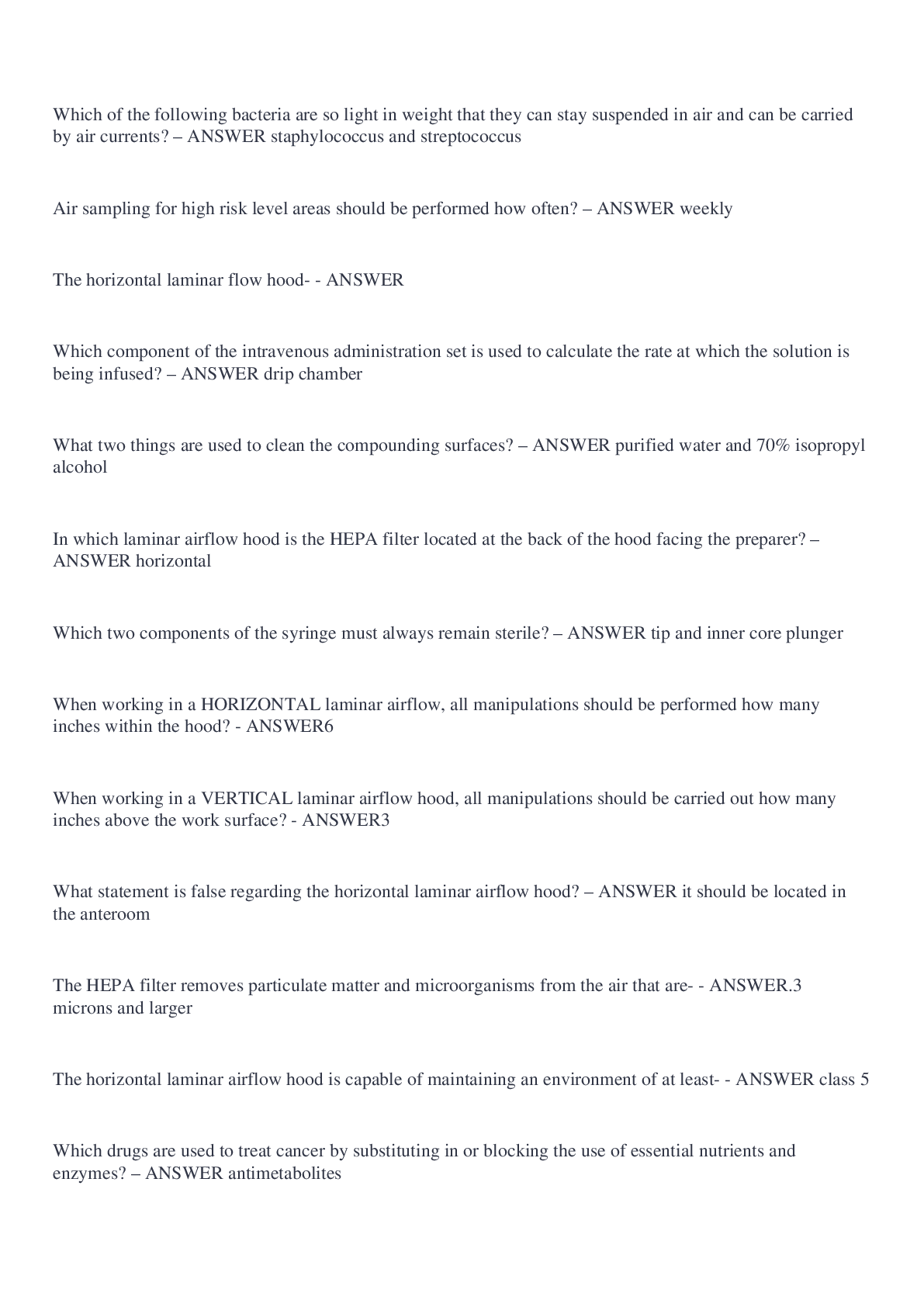
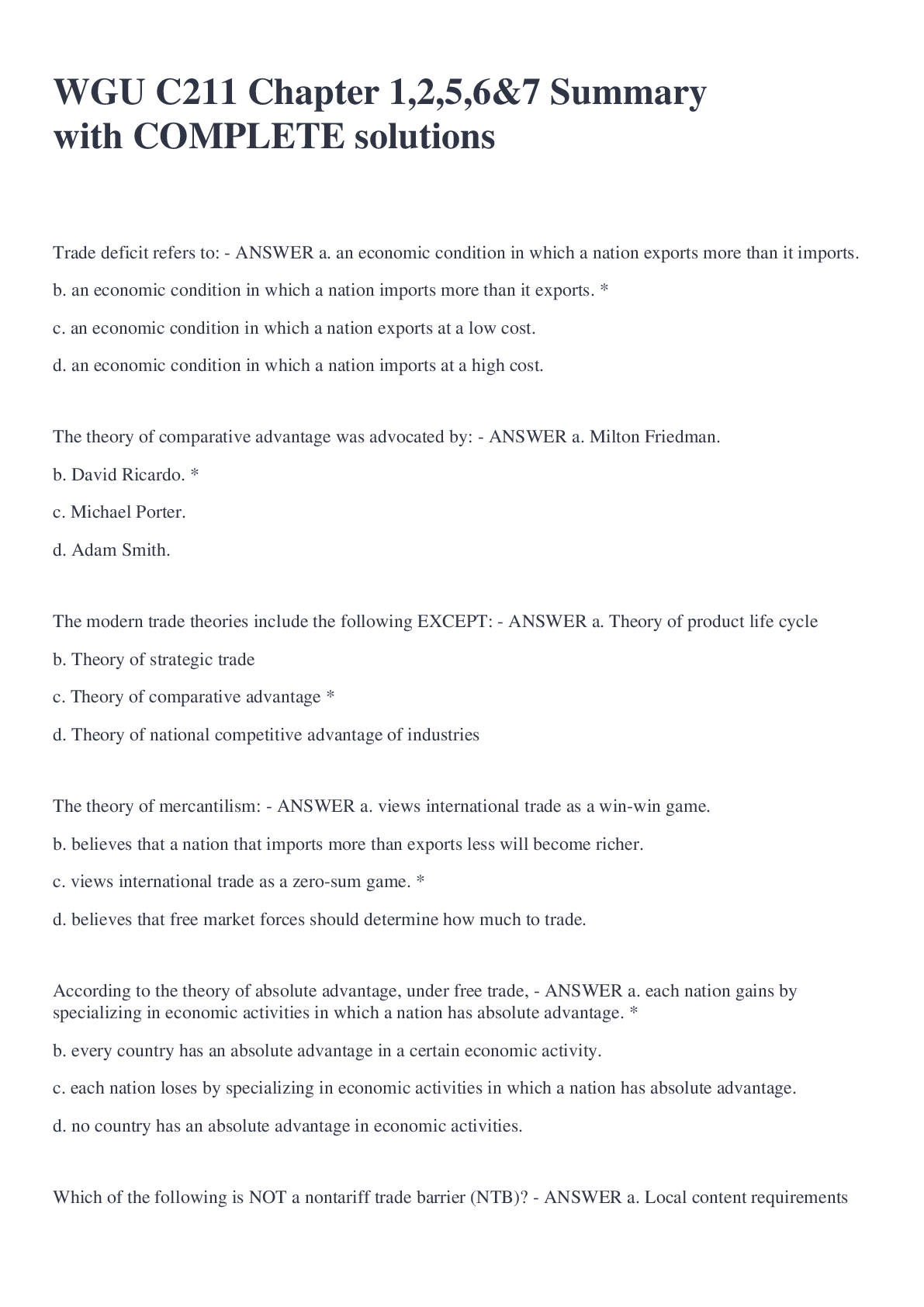
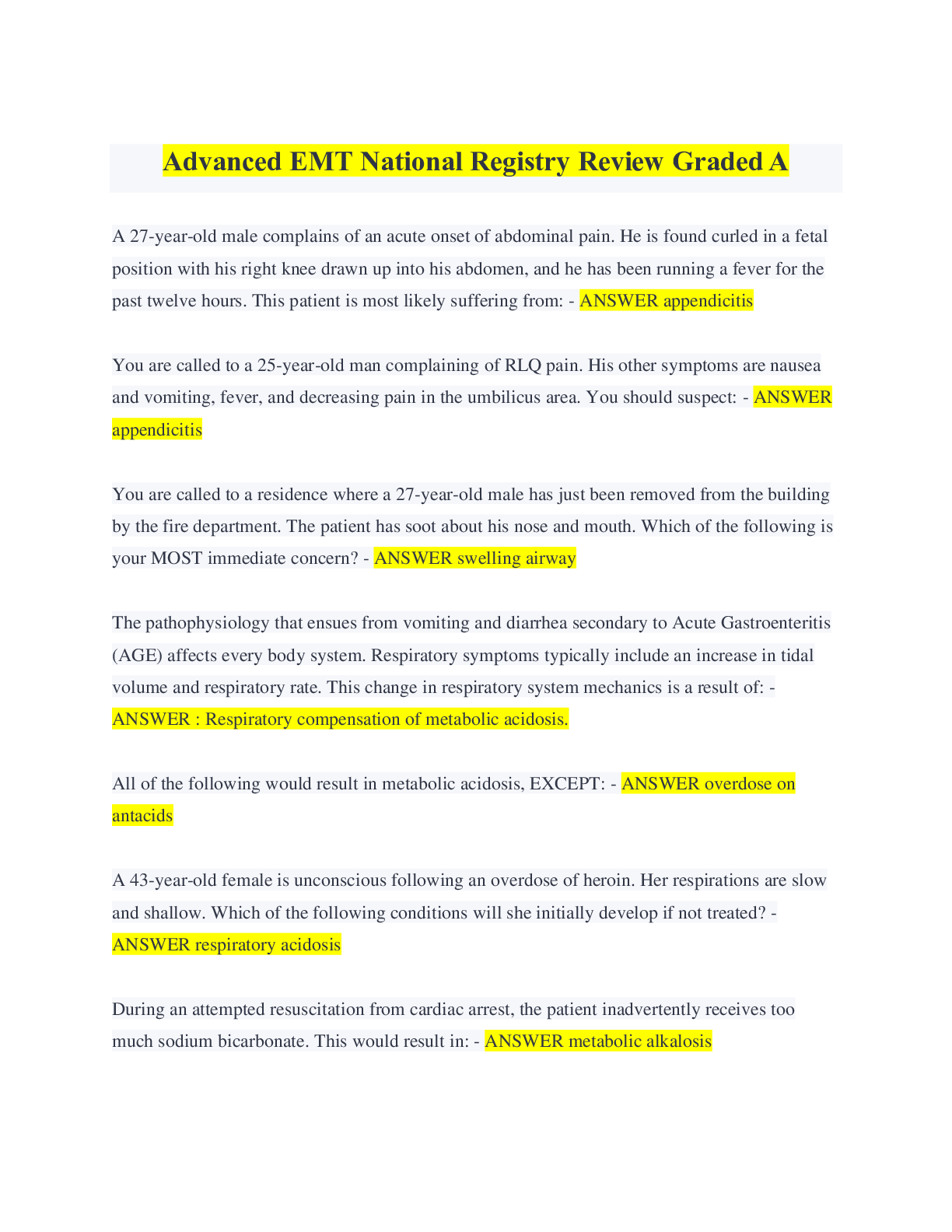
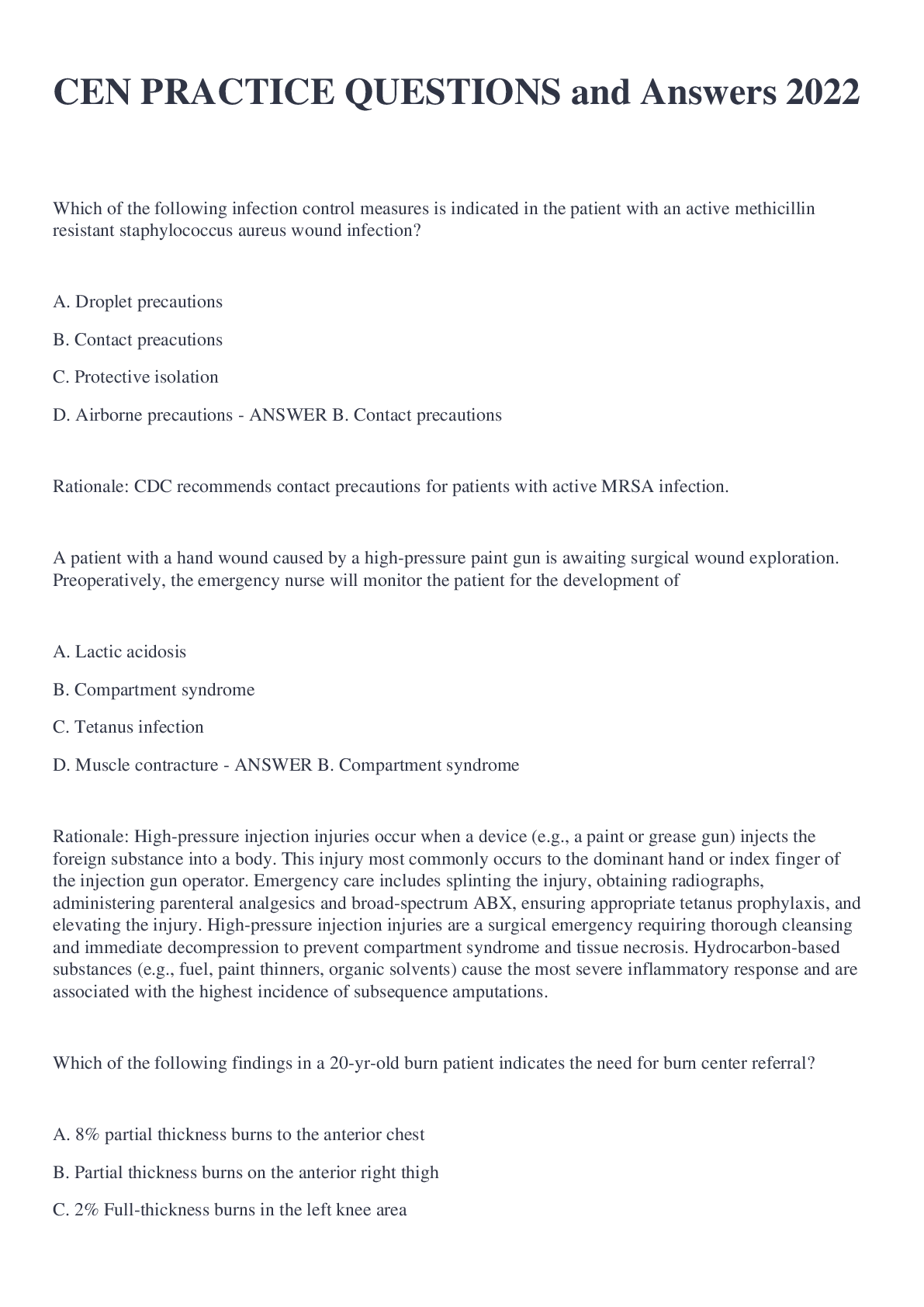
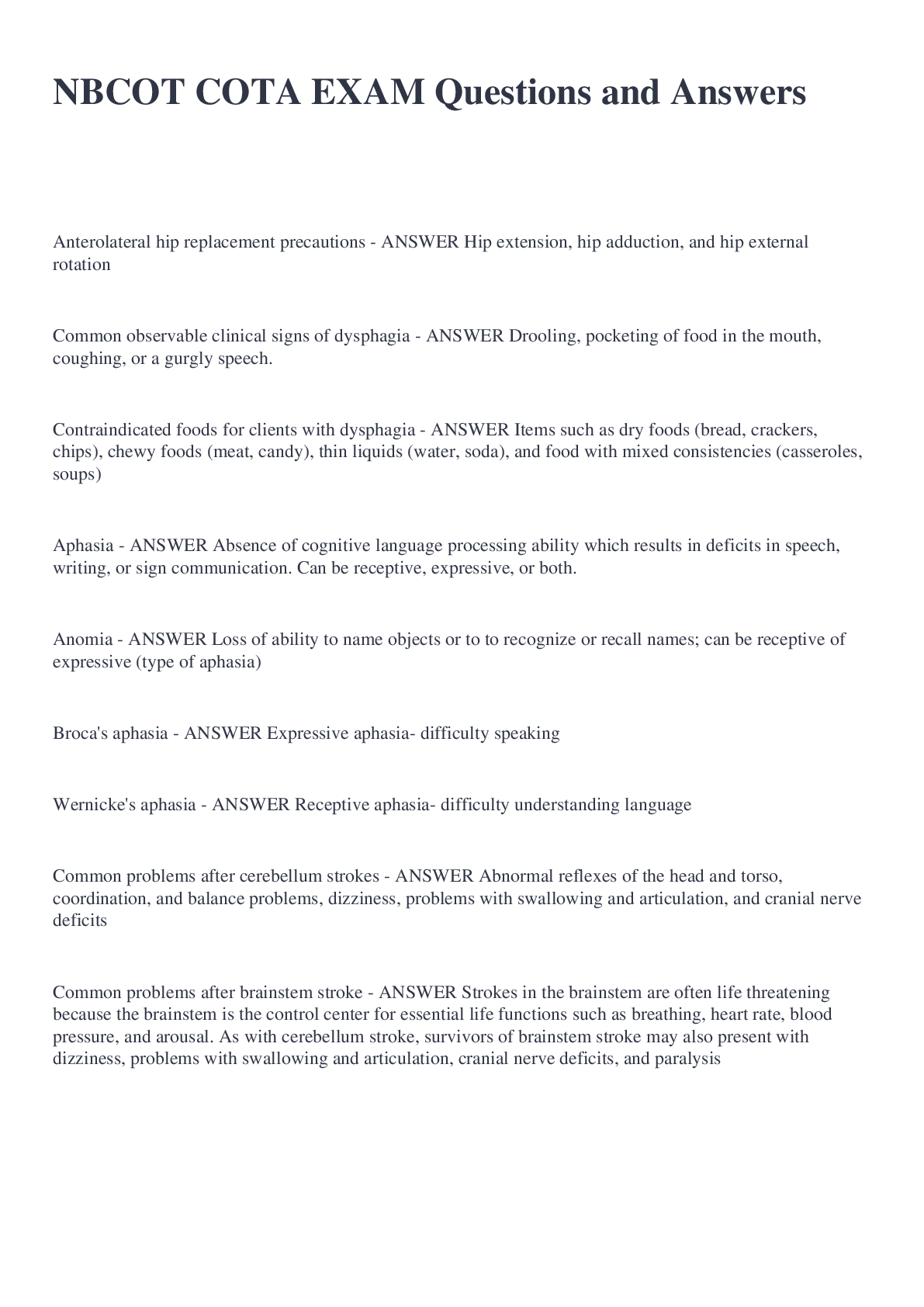
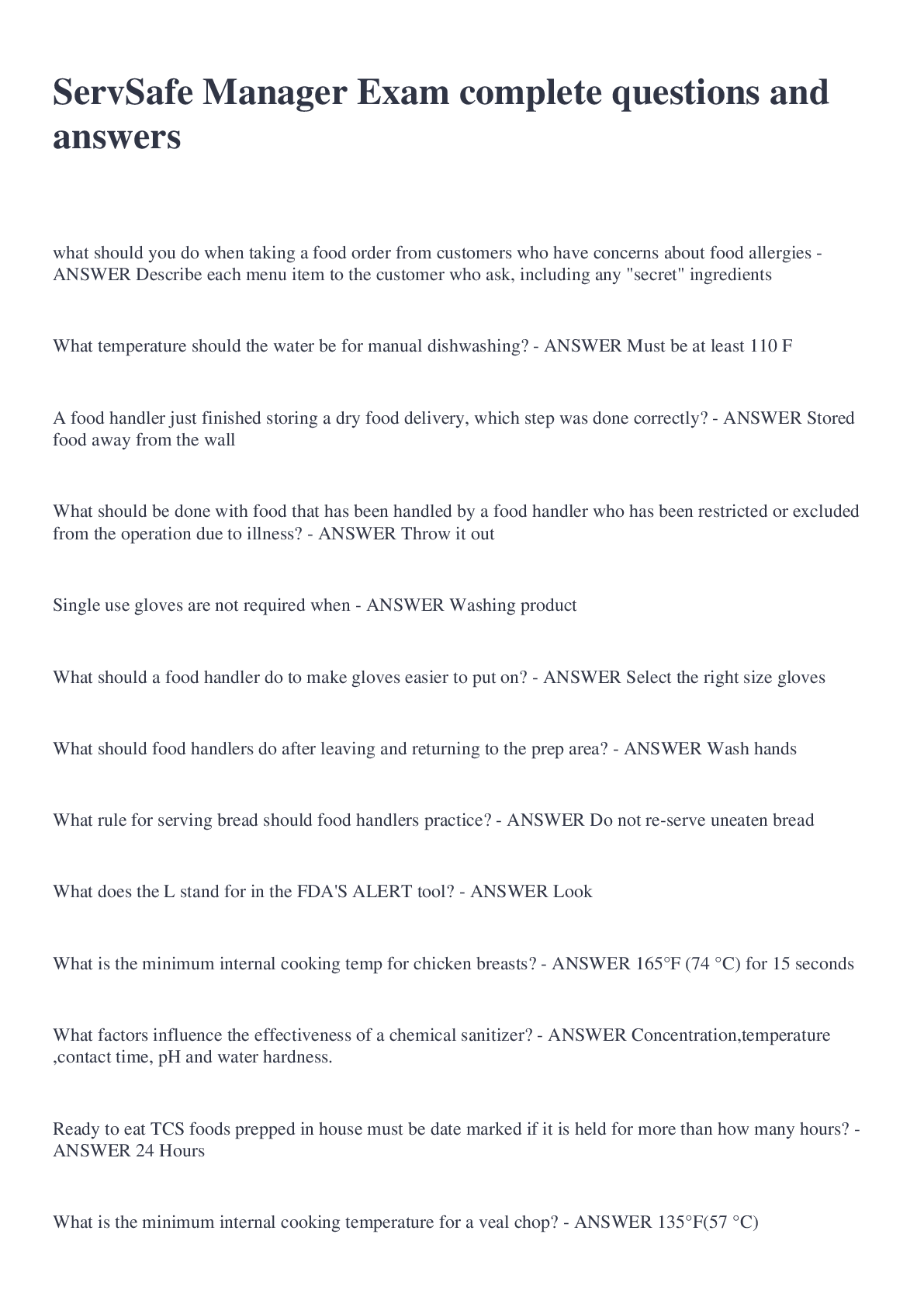
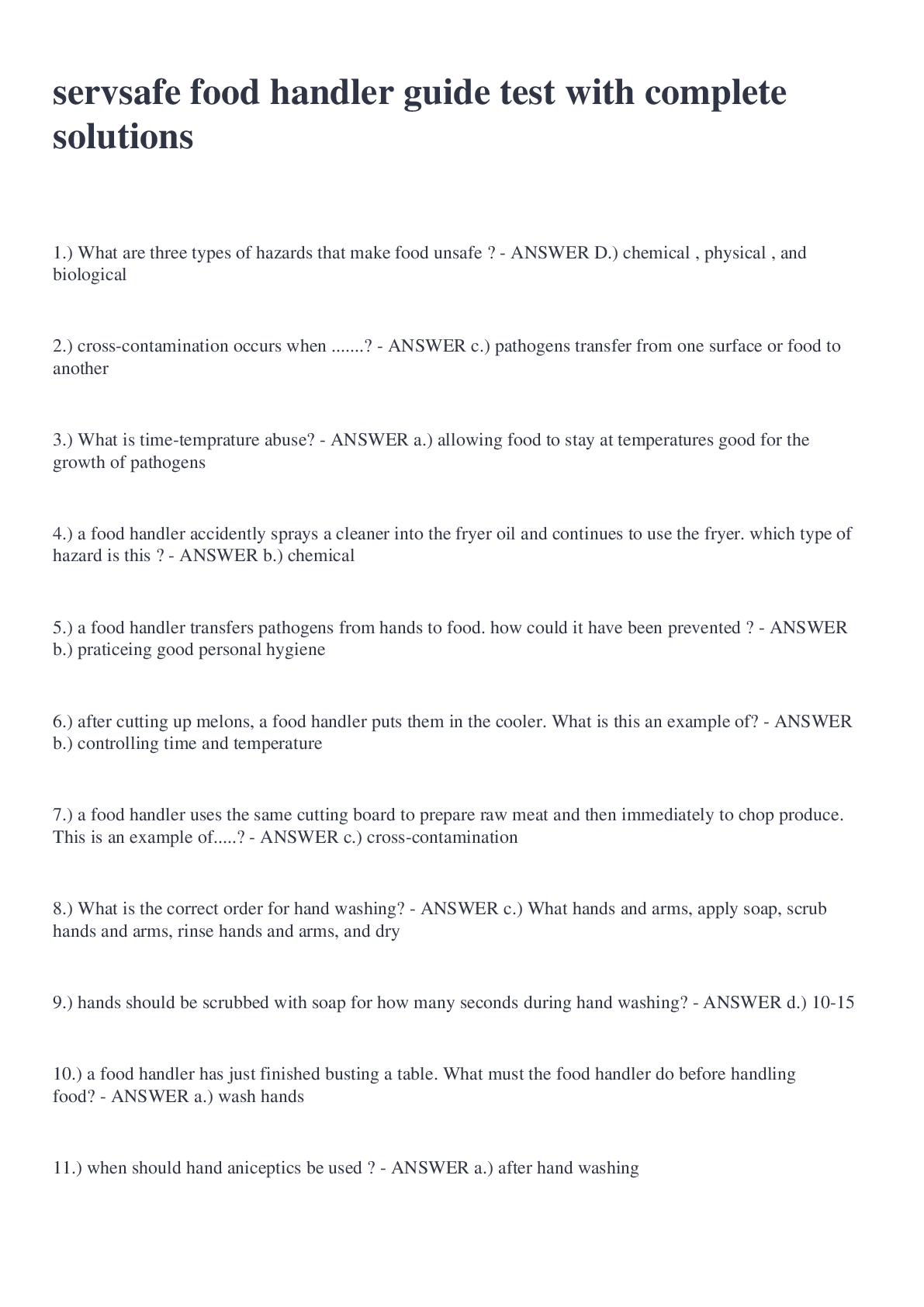
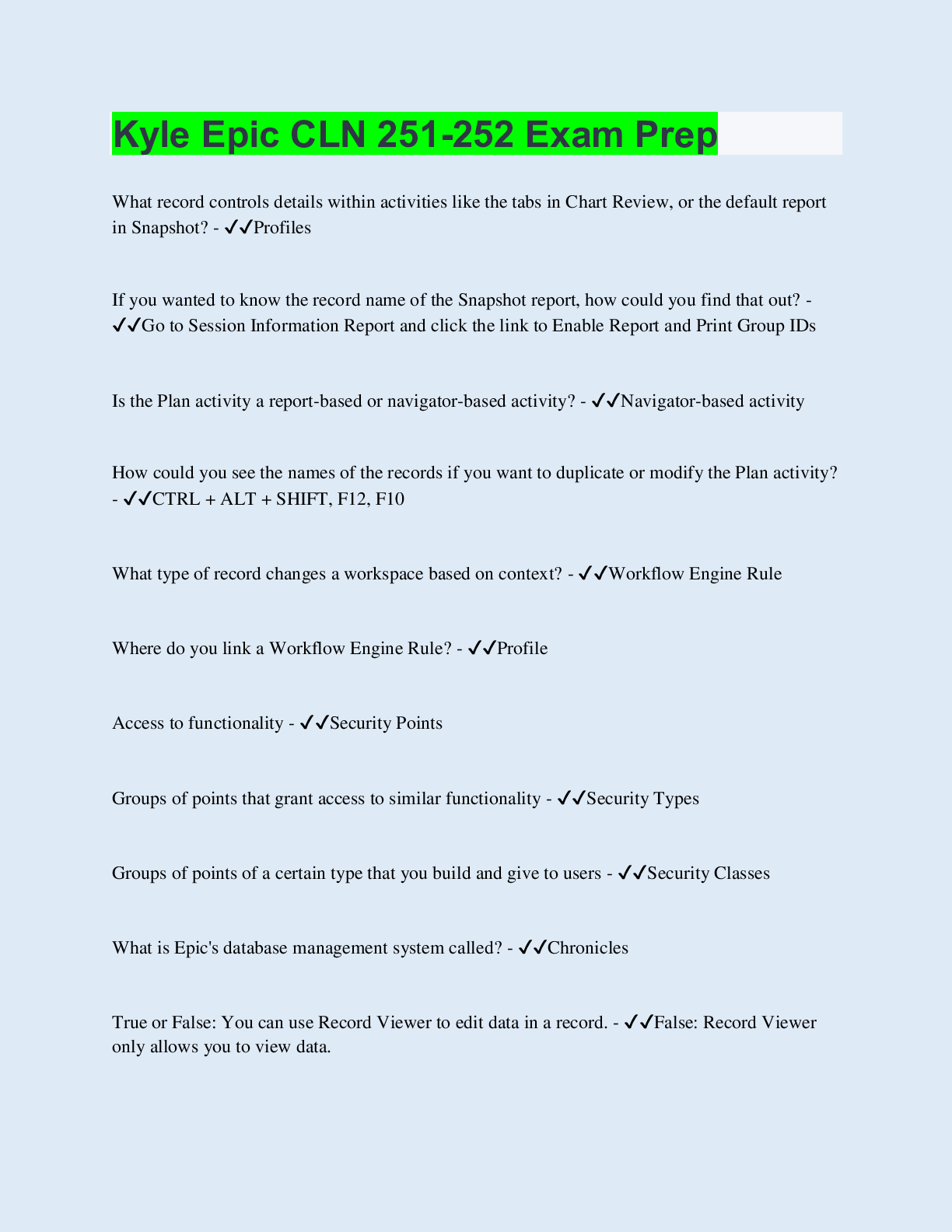
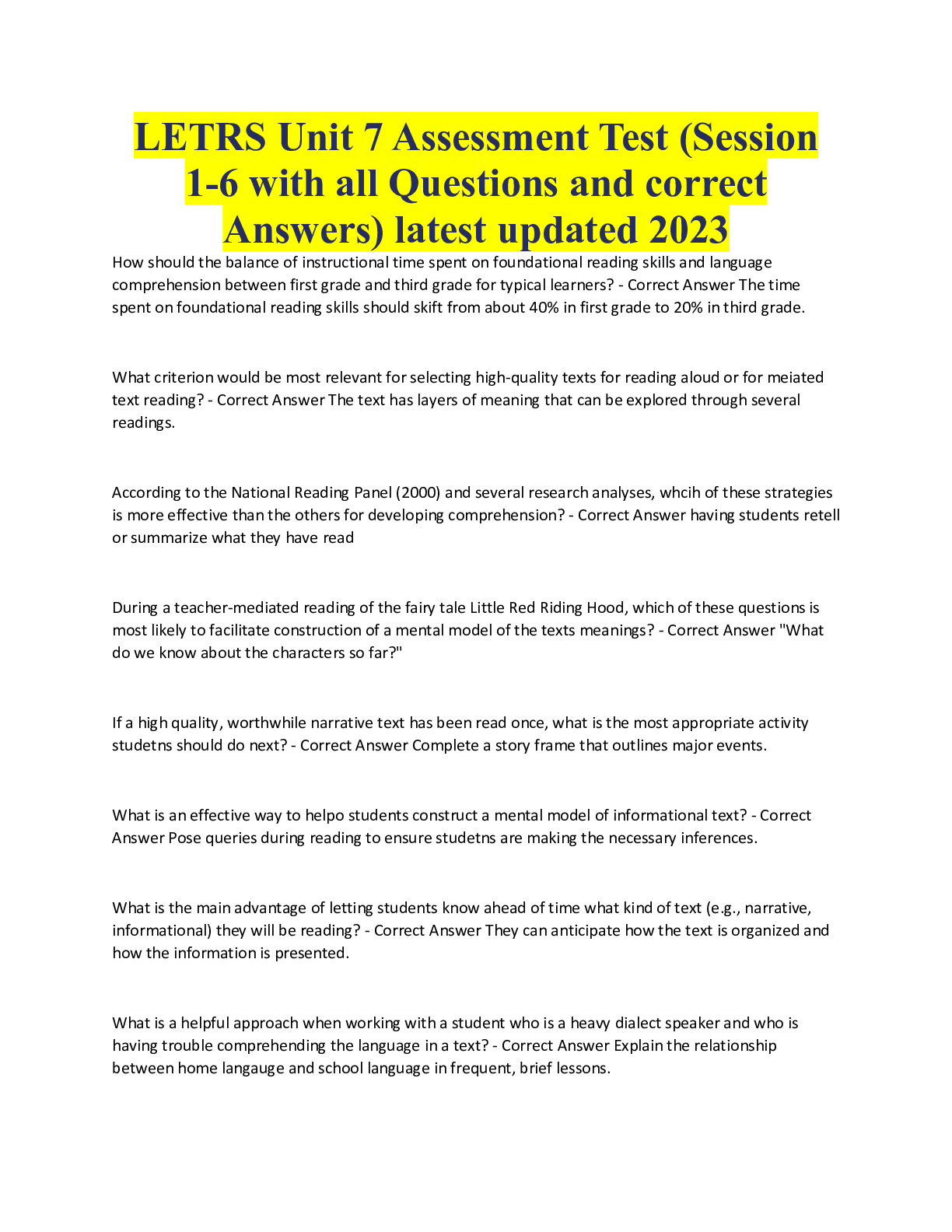


.png)
.png)

